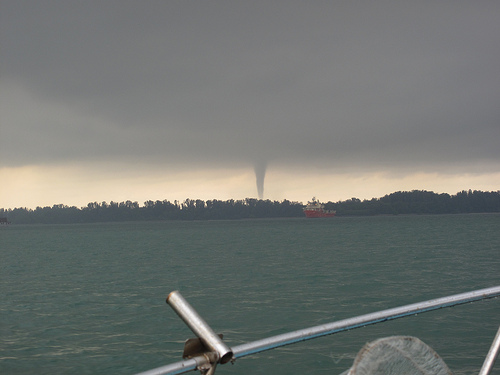I had the opportunity to attend the public lecture by Professor Tony Haymet, Director of the Scripps Institution of Oceanography (SIO) and Vice Chancellor for Marine Sciences, University of California, San Diego on “The Blue Future: Exploration of the Oceans”.
SIO is, quoting their website “… one of the oldest, largest, and most important centers for ocean and earth science research, education, and public service in the world. Research … encompasses physical, chemical, biological, geological, and geophysical studies of the oceans and earth.”
Prof Haymet, who is “Oz-tra-lian”, spoke eloquently about the research carried out at SIO, which has 1400 staff (wow!), 1 research platform and 4 ocean-going research vessels (double wow!), making the institute with the largest research fleet in the world.
He also spoke about their Argo Floats system, in which “robot” sensing devices are used to measure temperature and salinity of the oceans. “So what?” you might ask - well, research institutions from 26 nations and over 3000 fully autonomous floats deployed throughout the world’s oceans is what Prof Haymet called their “proof of concept”. It is fully collaborative project, as all the data (“… which happens to sit at SIO …”) is made fully available to researchers.
He showed videos of their modified unmanned (unpersoned?) aerial vehicles, initially designed for urban warfare, to collect atmospheric data. The weapons of destruction were replaced with micro-computers and micro-sensing devices. With this technology, they have tracked the flow of “brown clouds” across the globe.
He also showed the audience the need for long-term monitoring, and how it might produce unexpected results. A 60-year record of fish larvae and water quality data sampled from the Monterey Bay area, initiated to study the disappearance of sardines (important for Monterey’s sardine industry) has now become what is thought to be the most complete record of the effect of climate change on fish populations. The data is now being written up in what Prof Haymet calls “… the most important climate change effects paper” from SIO.
He briefly mentioned the SEAPLEX expedition to study the Pacific Ocean Garbage Patch - a patch so big, you would take days to sail through it! Modelling of the ocean currents shows a potential patch in the southern hemisphere off the coast of Ecuador and Chile that is even larger.
He also touched on SIO ocean acidification research, which had recently recorded an unheard of value of pH 7.5, which no one thought they would see in their lifetime. This acidic waters (a result of our CO2 emissions) spell disaster to all marine plants and animals that secrete a calcium carbonate skeleton acidification. For me personally, such levels of pH would spell the end of coral reefs that I love so much.
It was surfeit of information, crammed skillfully into an hour-plus talk which barely scraped the surface of the research done to understand our “inner space”. It was the best use of four hours (travel there and back, makan, the talk) of a Monday evening.
![]() ).
).
